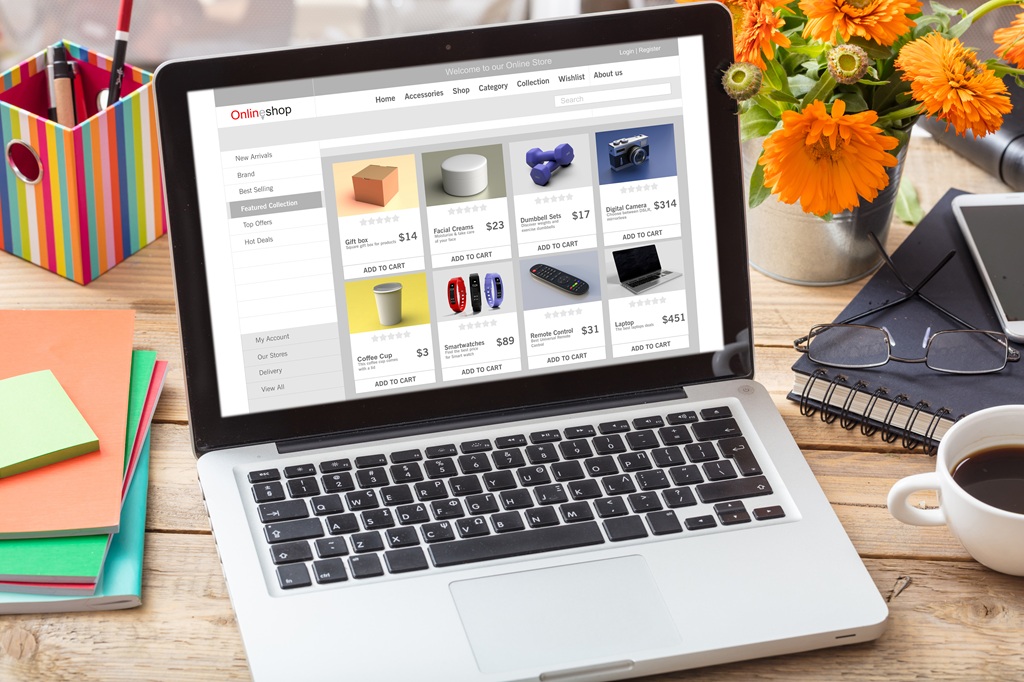If you’re a D2C brand, you’re not just selling a product — you’re selling an experience, a lifestyle, and a story. And you’re doing it without the middleman. No Amazon. No retail partners. No wholesale buffers. That means every click, every visitor, and every search matters.
But here’s the problem: building a stunning D2C store isn’t enough. If customers can’t find you when they search, they’ll end up with a competitor — or worse, on a marketplace that undercuts your brand.
This is where a smart D2C ecommerce SEO strategy starts to make all the difference.
SEO is your most powerful growth lever, bringing in high-intent traffic, building long-term brand equity, and lowering your reliance on paid acquisition.
In this guide, we’ll break down exactly how to optimize your direct sales channel for visibility, authority, and conversions.
Let’s dive in…
- What Is D2C Ecommerce SEO?
- Why D2C Ecommerce SEO Is Important?
- How to Build a D2C SEO Strategy That Drives Real Growth
- Technical SEO: Build the Foundation for Scale
- Site Architecture & Internal Linking: Make Navigation Work for SEO
- Keyword Strategy: Capture Demand at Every Stage
- Product Page Optimization: Turn Visibility into Revenue
- Content Marketing: Fuel Discovery, Authority & Loyalty
- Link Building: Earn Authority That Compounds
- SEO Metrics That Matter for D2C Brands
- Stop Renting Traffic. Start Earning It
- Frequently Asked Questions
What Is D2C Ecommerce SEO?
D2C SEO is the process of optimizing your website, content, and digital assets to drive organic traffic directly to your owned ecommerce store without relying on third-party marketplaces like Amazon, Walmart, or retail partners.
D2C SEO focuses on building your brand’s visibility, trust, and ownership across the entire customer journey.
Why D2C Ecommerce SEO Is Important?
In a D2C model, you own the brand, the store, and the customer relationship. This also means you own the responsibility of being found.
Without SEO, you’re invisible to high-intent shoppers searching for what you offer. You’re stuck renting traffic from paid ads. And you miss out on the compounding returns that only organic traffic can deliver.
Here’s why D2C SEO is non-negotiable:
- You’re competing on value, not price.
- Organic traffic protects your margins.
- SEO compounds over time.
- You own the data.
It builds brand equity. Ranking for your niche makes you the go-to choice.
How to Build a D2C SEO Strategy That Drives Real Growth
A winning D2C SEO strategy doesn’t chase traffic. It builds visibility, trust, and conversion.
Here’s how top-performing brands turn organic search into a predictable growth engine:
Technical SEO: Build the Foundation for Scale
If search engines can’t crawl or index your site properly, nothing else matters. Before you chase rankings, your backend must be bulletproof.
Focus on:
Mobile-first UX: Most D2C discovery starts on phones. Your site needs to feel fast and seamless.
Site speed: Especially on product and checkout pages — even a 1-second delay can kill conversions.
Crawlable architecture: Use flat, intuitive structures that help bots (and buyers) find key pages quickly.
Structured data: Implement Product, Review, Breadcrumb, and Organization schema to unlock rich results.
Canonical tags: Prevent duplicate content and keep your index lean and focused.
XML sitemap: Submit a clean, updated sitemap to Google Search Console to guide proper indexing.
Site Architecture & Internal Linking: Make Navigation Work for SEO
Your site’s structure isn’t just about user experience. It directly impacts crawlability, indexation, and how link equity flows through your store.
For D2C brands, clarity beats complexity. A clean, well-organized architecture helps both search engines and customers find what matters.
Focus on:
Clear category hierarchies: Group products logically. Avoid deep nesting — no page should be more than 3 clicks from the homepage.
Optimized internal links: Link from high-traffic pages (like your homepage or top blogs) to key product and collection pages. Use descriptive anchor text.
Faceted navigation: Allow filtering (e.g., size, color) without creating index bloat. Use canonical tags and parameter controls.
Pagination best practices: Use “load more” buttons or numbered pages that Google can crawl easily. Make sure important pages aren’t hidden behind endless scrolling.
Breadcrumbs: Help users orient themselves, and give Google extra context on your site structure.
Strong site architecture makes your site easier to navigate, easier to crawl, and easier to scale.
Keyword Strategy: Capture Demand at Every Stage
D2C SEO isn’t just about ranking for product names. It’s about meeting your audience wherever they are in the buying journey.
Keyword research helps you attract the right traffic, from problem-aware browsers to ready-to-buy shoppers.
Focus on:
Branded keywords: Make sure you dominate when someone searches your brand name or products (e.g., “[Brand] protein powder”).
Non-branded, high-intent terms: Target what your audience is really searching (e.g., “best vegan protein” or “protein powder for women”).
Problem-aware phrases: Go upstream with queries like “why am I always tired” or “how to build muscle without dairy.” These feed content ideas and blog traffic.
Long-tail keywords: Capture niche interest with specific phrases (e.g., “low-FODMAP pre-workout powder” or “best gaming pc under $1000”).
You can use tools like Ahrefs or Semrush to find relevant keywords.
A well-rounded keyword strategy brings in traffic from every stage.
Pro Tip: Use Google Autocomplete, People Also Ask, and forums to see what real people are asking.
Product Page Optimization: Turn Visibility into Revenue
Getting people to your product page is half the battle. The other half? Convincing them to buy, and signaling enough value for Google to keep sending traffic.
Every product detail page (PDP) should be designed to rank and convert.
Focus on:
Clear, keyword-optimized H1s: Use product names that match how customers search.
Unique descriptions: Write benefits-first descriptions that answer real questions.
Embedded FAQs: Address objections, earn rich snippets, and keep users engaged.
High-quality images & videos: Show the product in use. Make your photos and videos professional-looking. Add alt text for image SEO.
UGC and reviews: Build trust and help with long-tail keywords (“best [product] for sensitive skin”).
Internal links: Add links to related products, buying guides, or comparison pages.
Schema markup: Use Product, Offer, Review, and AggregateRating schema to qualify for enhanced SERP features.
Don’t just describe the product. Sell the outcome. Show the value. Answer the “why you” better than any competitor can.
Content Marketing: Fuel Discovery, Authority & Loyalty
Your product pages sell, but your content brings people in, answers their questions, and builds trust before they’re ready to buy.
Great content isn’t filler. It’s how D2C brands earn attention, educate buyers, and rank for the topics that matter most.
Here are some tips to make content work for you.
Buying guides: Help users choose the right product (e.g., “How to Pick the Best Electrolyte Drink for Running”).
Comparison posts: Capture mid-funnel intent (“[Your Brand] vs [Competitor]”).
Product education: Break down ingredients, benefits, and use cases.
Problem-solving articles: Address pain points your product solves (“Why You’re Always Dehydrated, and How to Fix It”).
Brand story content: Share your mission, founder journey, and behind-the-scenes. It helps you build emotional connections and backlinks.
Lifestyle & community posts: Show how your product fits into a bigger movement or value system.
Build topical clusters around your product categories. Link internally. And update posts regularly to stay ahead in search.
In D2C, the brands that win search are the ones that teach, not just sell.
Link Building: Earn Authority That Compounds
You can’t win SEO without authority, and authority starts with links.
For D2C brands, link building isn’t about spammy directories or link swaps. It’s about earning high-quality, relevant backlinks that build credibility and move the needle.
Here are some tactics that work in 2025.
Digital PR: Pitch unique brand angles, product launches, or mission-driven stories to media outlets and blogs.
Affiliate & influencer features: Get your products reviewed or mentioned on sites with real traffic and SEO value.
Guest content & thought leadership: Share expert insights on industry publications or podcasts.
Data-driven content: Original surveys, product comparisons, or customer insights can earn links naturally.
Community & cause-based partnerships: Collaborate with aligned nonprofits or creators, and generate links that reflect your brand’s values.
Quality beats quantity. A handful of links from niche-relevant, high-authority sites will outperform hundreds of low-quality backlinks.
SEO Metrics That Matter for D2C Brands
Forget vanity metrics. These are the KPIs that show whether your SEO is working:
Organic revenue: Your #1 metric. If SEO isn’t driving sales, it’s not doing its job.
Non-branded keyword growth: More new customers = more growth.
Click-through rate (CTR): If no one’s clicking, your content won’t rank for long.
Indexed vs. valuable pages: Only index what drives traffic or conversions.
Time on page & bounce rate: High engagement tells Google your content hits the mark.
Top-converting content: Know what ranks and sells. Then double down on it.
Stop Renting Traffic. Start Earning It
In the D2C world, growth isn’t handed to you. You’ve got to earn it. That means showing up where your customers search, building trust before the click, and converting on your terms.
SEO isn’t just a marketing channel. It’s how you reduce paid ad dependency, control your margins, and scale with confidence. It’s not always flashy, but it compounds and it works.
At Flying V Group, we help D2C brands turn organic search into a long-term growth engine. No fluff, no guesswork — just strategy, execution, and results.
Ready to take control of your customer acquisition? Let’s build an SEO system that drives real, compounding growth.
Frequently Asked Questions
1. Can D2C ecommerce SEO help reduce ad spend?
Yes. D2C ecommerce SEO generates steady, long-term organic traffic, which means brands don’t have to rely as heavily on paid advertising. By ranking higher for key search terms, you attract ready-to-buy customers naturally, allowing you to cut costs and reinvest in growth.
2. Can I do D2C SEO in-house, or should I hire an agency?
You can start in-house, but growth often stalls without deep SEO expertise. An agency helps you scale faster, with strategy, execution, and systems built for ROI.
3. How often should I audit my D2C site for SEO?
Quarterly SEO audits work best for D2C brands. Instead of overanalyzing everything, focus on high-impact areas: product pages, site speed, indexing issues, and top-performing content. This keeps your store optimized for growth without getting buried in low-priority fixes.
4. How much does D2C SEO cost?
D2C SEO pricing depends on your site size, competition, and growth goals. Some brands spend a few thousand per month; others invest more for aggressive scaling. What matters most is ROI, not just rankings, but real revenue from organic search.












0 Comments